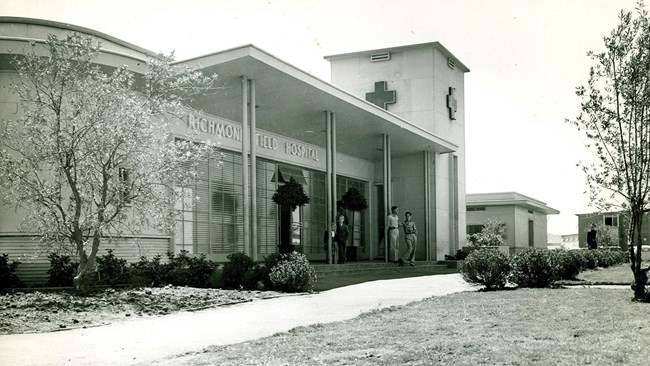
Kaiser Permanente Heritage Resources. The Historic Kaiser Field Hospital: Pioneering Pre-Paid Medical CareAccess: This building is privately owned and uninhabited. It can be viewed from the outside, only. The Birth of Pre-Paid Medical CareHenry J. Kaiser's groundbreaking idea of providing pre-paid medical care was initially aimed at ensuring that his workforce could meet the rigorous demands of wartime production. This system quickly proved beneficial, extending beyond the workers to their families and setting a precedent for future healthcare models. For many workers, this innovative approach marked the first time they had access to regular medical care, fundamentally transforming their lives and well-being. Today, the concept of pre-paid medical care is a central pillar of American healthcare, a lasting legacy of the WWII Home Front. The Kaiser Field HospitalThe Kaiser Field Hospital played a crucial role in this pioneering healthcare system. Opening with only ten beds, the hospital rapidly expanded its capacity to 160 beds by 1944, reflecting the increasing demand for medical services as the war effort intensified. The Field Hospital served as the second tier of emergency treatment for those injured in the shipyards. Modern InfluenceThe Kaiser Field Hospital continued to operate as a vital part of the Kaiser Permanente healthcare system long after the war, providing medical services to countless individuals until its closure in 1995. The building, which still stands today, is privately owned, serving as a historical landmark that commemorates the innovative spirit and forward-thinking approach of Henry J. Kaiser. |
Last updated: December 19, 2024
